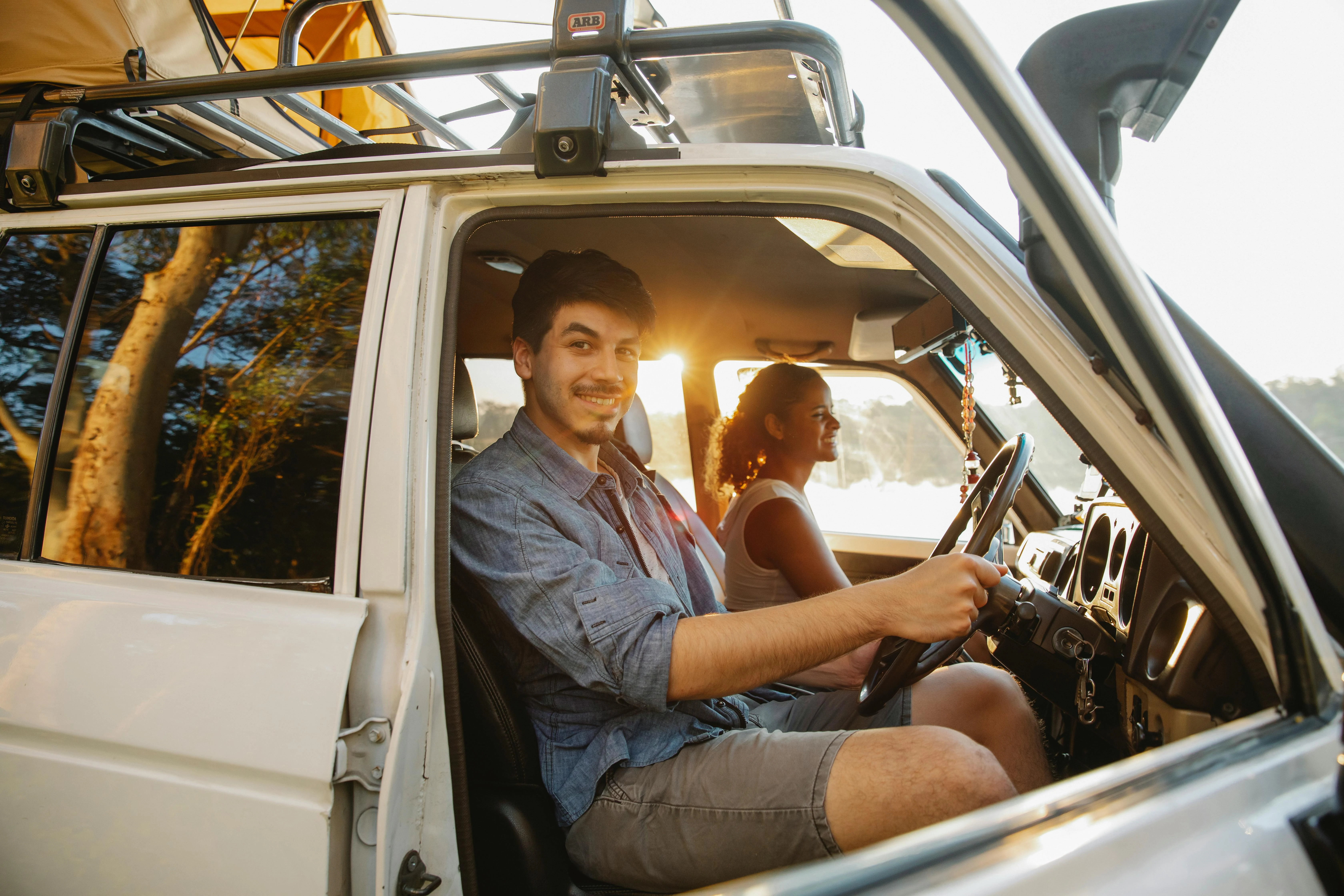Even with precautions taken at home, the external environment is fraught with potential dangers leading to hazardous falls. Given that falls contribute significantly to fractures, head trauma, and injury-related fatalities, especially with advancing age, it's crucial to understand how to navigate safely beyond your doorstep. Here are strategies to prevent falls in various public settings.
In stores, smooth floors can pose a slip and fall risks. Wear footwear with nonslip soles and consider using support aids if balance is a concern. Supporting yourself with a shopping cart, store-provided electric scooter, or rollator can provide stability and opportunities for rest during shopping trips. When reaching for items, maintain caution, as reaching above shoulder height may compromise balance. Utilize techniques like standing with one foot forward and one foot back or seek assistance when needed.
In bustling places like airports, malls, concert halls, or theaters, you might find yourself amidst crowds, increasing the risk of collisions that could lead to a fall. To protect yourself, consider walking with a partner or using a rollator for stability. The rollator can also serve as a warning to others to be cautious around you and give you space,
When visiting parks or playgrounds for a stroll, jog, or with children, be wary of uneven terrain that heightens the risk of falls. Watch out for areas where different surfaces meet, such as the transition from a parking lot into a mulch playground. Ensure you wear appropriate footwear, such as sneakers with deep treads or sturdy hiking boots.
Regarding public staircases, if you feel unsteady on stairs, it's advisable to avoid them and opt for an elevator if available. If stairs are unavoidable, proceed with extra care, considering they may not match the dimensions you're accustomed to at home. Always grasp the handrail, move slowly, and in dimly lit areas, use a portable flashlight or smartphone with a flashlight app to illuminate your path.

First impressions matter, and the initial look of the jumpsuit was promising. The silver brogue detailing on the dress and the lace added a touch of elegance that caught my eye immediately. However, as I slipped into it, I couldn't shake off a certain feeling of uncertainty.
Let's start with the positives. The design elements, such as the V-neck and 3/4 sleeves, exuded elegance, perfect for a cocktail occasion. The straight leg pants added a sleek, sophisticated silhouette that I appreciated. The jumpsuit overall had an air of refinement that could elevate any wardrobe.
Yet, despite these positive attributes, something felt slightly amiss. Maybe it was the shade of blue. On the website, the color appeared lighter, reminiscent of a serene peacock blue. However, the reality was a deeper shade, which left me undecided. While the color was undoubtedly striking, I couldn't help but wonder if it suited me as well as the lighter hue would have.

This uncertainty was compounded by my past experiences with jumpsuits from RoseWe, which set a high standard in terms of design and fit. Comparatively, this particular jumpsuit didn't quite hit the mark for me. It felt like it was missing that wow factor, that special something that would make me reach for it time and time again.
Of course, personal preference plays a significant role in fashion choices, and what might not appeal to one person could be a favorite for another. So, I leave it to you, dear readers, to weigh in on this dilemma. Do you think this shade of blue complements me? Does the jumpsuit exude the elegance and charm it promises? Your feedback could help me make the final call.

The Environmental Imperative:
Pela's mission is as ambitious as it is admirable: to create a waste-free future. Founded by Jeremy Lang, who witnessed firsthand the devastating effects of plastic pollution on our oceans, Pela is driven by a deep sense of responsibility towards the planet. Their commitment to sustainability is not mere lip service; it's ingrained in every aspect of their operation. From using environmentally sensitive materials like flax chives and plant-based polymers to reducing carbon emissions and water usage, Pela sets a new standard for eco-consciousness in the tech industry.
Why Pela Case?
The question really should be, why not Pela? Unlike conventional phone cases that contribute to the ever-growing mountain of plastic waste, Pela offers a guilt-free alternative. Their cases not only protect your phone, but also contribute to the greater good by reducing carbon emissions and waste production. By choosing Pela, you're not just making a purchase; you're joining a movement towards a more sustainable future.
Personalization and Emotional Connection:
One of the most delightful aspects of my Pela experience was the opportunity to personalize my phone cases. As someone who values individuality and uniqueness, being able to imprint my name on each case added a personal touch that resonated deeply with me. Whether it's my last name Jacob, the whimsical Melody, or the profound Chinaka (meaning "God speaks" in Igbo language), each case tells a story and reflects a part of my identity. It's more than just a phone accessory; it's an expression of self.
Aesthetic Appeal and Affordability:
Beyond their eco-friendly credentials, Pela cases boast a sleek and stylish design that rivals any conventional plastic case. Available in a spectrum of vibrant colors, each case is a testament to thoughtful craftsmanship and attention to detail. What's more, they're surprisingly affordable, proving that sustainability doesn't have to come with a hefty price tag. In a world where fast fashion and disposable goods reign supreme, Pela offers a refreshing alternative that's both ethical and accessible.

Uncompromising Protection:
Contrary to the misconception that eco-friendly equals flimsy, Pela cases are built to last. Made from Flaxstic®, a compostable bioplastic elastomer infused with flax straw materials, these cases offer durability without compromising on sustainability. Precision-cut openings ensure easy access to ports and buttons, while wraparound edges provide ample protection against drops and scratches. Plus, with their screen protection guarantee, you can rest assured knowing that your phone is in safe hands.


According to a recent study, long-term exposure to the noise produced by cars, trucks, trains, and airplanes may increase the risk of cardiovascular disease.
The Harvard-led examination of three decades' worth of data from 114,116 women involved in the Nurses' Health Study was published online by Environmental Health Perspectives on December 4, 2023. Researchers evaluated the relationship between noise levels where participants lived and their incidence of cardiovascular disease using a geospatial noise model developed by the National Park Service. This model estimates noise levels in different locations using data gathered from monitoring sites across the United States.
Researchers discovered that participants' long-term risk of cardiovascular illness increased with the amount of transportation noise they were exposed to. There was a 4% rise in cardiovascular issues such coronary artery disease and stroke for every four dB increase in noise above a baseline level. The authors of the study noted that prior research has similarly connected noise exposure to transient alterations in circulation, such as blood pressure, heart rate, and blood vessel narrowing.
This research it still being watched.
Photo by Andrea Piacquadio

Although this is up for discussion, legend has it that the illness was first discovered by the Vikings in Northern Europe. Later, Guillaume Dupuytren, a French surgeon from the 19th century who performed the first successful operation on the ailment, was honored with the name. In the twenty-first century, approximately one in every twenty Americans suffers from Dupuytren's contracture.
What is the contracture of Dupuytren?
The layer of fibrous tissue beneath the skin of the palm and fingers is called the fascia. This tissue becomes thicker and shorter in Dupuytren's contracture.
Initially, this enlarged region was a hard lump known as a nodule. It may develop into a thick band known as a cord over several years or decades, causing one or more fingers to curl toward the palm and become locked there, bent. This can make it challenging to use a computer, button garments, hold things, and carry out other daily chores.
It's not always the case that the illness gets worse and worse. For years, it might not change or, in certain cases, get better.
Trees contribute significantly to the quality of our lives in various ways. They play a crucial role in mitigating climate change by absorbing carbon dioxide and releasing oxygen, thus reducing greenhouse gases in the atmosphere. Additionally, trees act as natural sound barriers, diminishing noise pollution, and they purify the air by filtering out pollutants. When it rains, trees help to manage water runoff, which prevents flooding and soil erosion. Furthermore, they serve as habitats for a diverse range of creatures, from insects to birds, fostering biodiversity.
Beyond these ecological benefits, there's growing evidence that simply being in the presence of trees and green spaces positively impacts our well-being. Here are some of the key advantages:
As temperatures rise due to climate change, heatwaves become more common across the United States. However, certain areas, particularly urban neighborhoods, face even greater challenges due to the phenomenon known as urban heat islands. In these areas, materials like asphalt and concrete absorb heat during the day and release it slowly at night, causing temperatures to soar up to 7°F higher than in greener, suburban locales.
Fortunately, trees come to the rescue with their leafy canopies, providing much-needed shade. This shade isn't just a comfortable; it's a crucial factor in mitigating the impact of urban heat islands. By cooling the surrounding environment, trees help reduce the risk of heat-related illnesses, which disproportionately affect outdoor workers and vulnerable populations such as the young, elderly, and those with pre-existing health conditions.
Did you know that you should never leave certain items in your car? Some items have the potential to cause explosions! If you're a car owner or driver, you really need to check this out!
Listen up! It's truly enlightening. So, buckle up and brace yourself for some surprising stuff.
1. Lighters: Lighters contain flammable materials and pressurized gas. When exposed to high temperatures, especially in direct sunlight, the pressure inside the lighter can increase, causing it to explode. The flammable materials inside can ignite, leading to a potential fire hazard.
2. Power Bank: Power banks often contain lithium-ion batteries, which are susceptible to heat. When exposed to high temperatures, such as those in a car on a hot day, the batteries can become unstable and may catch fire or explode. Leaving the power bank in direct sunlight, which can further raise the device's temperature, significantly increases this risk.
3. Perfume and Mineral Water: Both perfume and mineral water can contain alcohol, which is flammable. When left in direct sunlight, the heat can cause the liquid to evaporate rapidly, creating a highly flammable atmosphere. If exposed to an ignition source, such as a spark, this vapor can ignite, leading to a fire.
4. Snacks: Snacks, especially those containing oils or fats, can spoil when exposed to high temperatures. The heat can cause the fat to oxidize, leading to rancidity and a change in taste and texture. Additionally, heat can accelerate microbial growth, increasing the risk of foodborne illness.
5. Glasses: Heat can damage glasses, especially those with plastic frames or prescription lenses. Plastic frames may melt or warp, while lenses can act as magnifying glasses, focusing sunlight onto nearby surfaces and potentially causing fires. Furthermore, exposure to high temperatures can cause metal frames to become hot enough to result in burns when worn.
6. Sun Cream: The active ingredients in sun cream can degrade when exposed to high temperatures, reducing their effectiveness in protecting the skin from UV radiation. Prolonged exposure to a hot car can accelerate this degradation, potentially resulting in inadequate sun protection. According to the FDA, sunscreen can catch fire.
7. Damp Beach Items: Damp beach items, such as swimsuits and towels, provide a moist environment ideal for the growth of bacteria and yeast. When left in a hot car, the temperature and humidity can further promote microbial growth, increasing the risk of infections or unpleasant odors.
8. Electronics: Electronic devices, including smartphones, laptops, and tablets, can suffer damage when exposed to high temperatures. Heat can affect the performance and lifespan of batteries, cause components to expand or contract, and even lead to thermal shutdowns or malfunctions. To prevent damage, it's advisable to avoid leaving electronics in hot cars whenever possible.
9. Handbags/Wallets: Handbags and wallets left in cars are vulnerable to theft, as they often contain valuable items such as credit cards, cash, and smartphones. Additionally, the warm and confined environment of a car can promote the growth of bacteria on items frequently touched by hands, potentially leading to hygiene issues or skin infections.
10. Aerosols (Pressurized Canisters): Pressurized aerosol cans, such as deodorants and hair sprays, pose a risk of explosion when exposed to high temperatures. The heat can cause the pressure inside the canister to build up, leading to ruptures or explosions. To mitigate this risk, it's important to store aerosols in a cool and well-ventilated environment.
11. Batteries: Batteries, both disposable and rechargeable, can leak or explode when exposed to high temperatures. Heat accelerates chemical reactions within the battery, leading to the release of corrosive electrolytes or gases. This not only poses a safety hazard but can also cause damage to the interior of the vehicle.
12. Plants: Plants left in hot cars are susceptible to heat stress and dehydration, which can quickly lead to wilting or even death. To prevent damage, it's important to keep plants shaded and hydrated during transport and avoid leaving them in the car for extended periods, especially on hot days.













